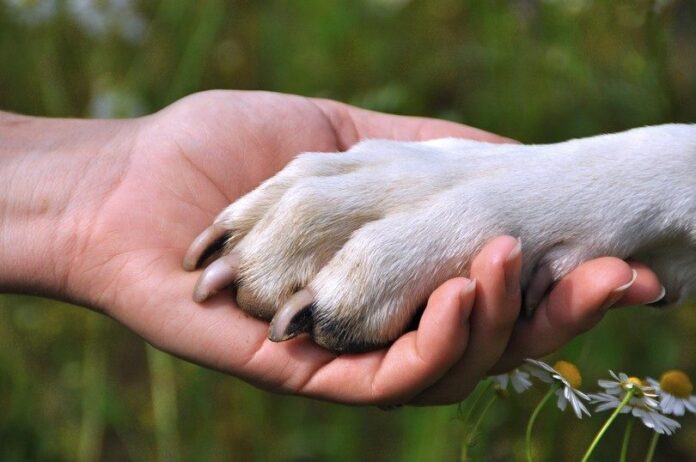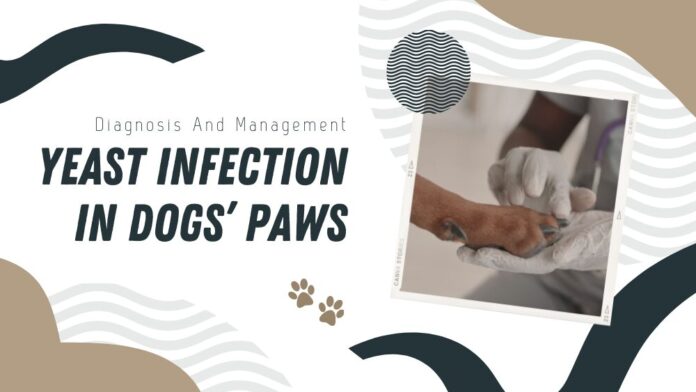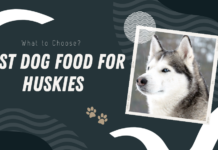Like their pet parents, dogs have an immune system spectrum that is usually within the normal range, or at least at the middle part of the range.
This enables the dog to fend off foreign bodies and microorganisms that can lead to infection.
When the immune system is not at its optimum state, the dog becomes more prone to developing several health infections and illnesses. One of the possible conditions is yeast infection.
Whenever a dog’s immune system is compromised due to several factors, such as the existence of another condition or as part of the adverse effects of the medications that the dog is currently taking, it cannot function properly in controlling the balance of the good normal flora in the dog’s body.
This is when the yeast gains the opportunity to bloom and become an infection.
Conventional veterinarians examine dogs with existing allergies and skin infections, after which they prescribe an antibiotic to address the problem. Antibiotics kill the bad bacteria, but the bad news is that they also kill the good ones.
This means that these medications clear out the normal and healthy yeast levels during the treatment process. The conditioned deteriorates and worsens, such that the disease may branch out into further complications when not properly addressed.

An allergic dog may contract a lot of yeast infections and can actually develop yeast allergy. This allergy should be tested further to determine whether the dog is having an allergic response to his own flora.
This can become a problematic situation because allergic response is a holistic reaction, and the manifestation can be observed both internally and externally.
Dogs with compromised immune systems are likely to develop a yeast infection, and those with hyperactive immune systems are not exempt as well. A hyperactive immune system can disturb the normal flora in the dog’s body, and such disturbance can also lead to fungal proliferation or irritation.
Signs and symptoms of a yeast infection
Veterinarians can perform a definitive diagnosis by conducting cytology, which refers to the taking of a sample using a swab and examining it under a microscope or performing a culturing in which a sterile swab is forwarded to the laboratory where cells will be grown and identified.

As a pet parent, you will be able to identify whether your fur baby is currently having a yeast infection just by the smell it emits. Known for a very distinct odor, a yeast infection smells like moldy bread. It can also have a smell that resembles corn chips and cheese-flavored popcorn.
It can be a musty, strong, and unpleasant smell. Pet parents should be aware that a yeasty odor is different from a typical doggy odor. Doggy odors are normal for healthy dogs, and a slight change in this typical scent indicates that your dog must be examined for any signs of worsening infection.
Aside from the smell, dogs with yeast infection can be observed to scratch very frequently. The overgrowth of yeast is an extremely itchy experience for a dog.
Yeast overgrowth in the paws, as well as an infection that manifests in the ears, will pose a problem and is more uncomfortable to deal with. You should take heed when the dog is starting to develop a habit of excessive scratching, because this action can only provide temporary relief and will not solve the problem.
Aside from the smell, dogs with yeast infection can be observed to scratch very frequently. The overgrowth of yeast is an extremely itchy experience for a dog. Yeast overgrowth in the paws, as well as an infection that manifests in the ears, will pose a problem and is more uncomfortable to deal with.
You should take heed when the dog is starting to develop a habit of excessive scratching, because this action can only provide temporary relief and will not solve the problem.
Treatment for yeast infection

To facilitate the treatment for yeast infection, several factors will ensure that the concern will be addressed appropriately. These factors include diet modification, disinfection, and administration of medications.
Modifying the diet
Yeast infection usually presents itself as patches rather than just a single spot. In cases in which the yeast infection shows up in a single location, more conservative treatment can be employed by using topical creams and wash. However, in cases in which all of the dog’s paws or ears are affected, you should conduct a review on what the dog eats, what might be the cause of the condition, or what aggravates the symptoms.
The basis of a dog’s well-being primarily depends on diet and nutrition. Whether you give your dog a balanced meal everyday will determine if the nourishment it receives allows the immune system to toughen up and combat the ongoing yeast infection or if it is not enough to provide nutritional support, which will result in the worsening of the yeast infection.
Veterinarians can place the sick dog on an anti-yeast or anti-fungal diet. This diet approach includes anti-inflammatory features and is often a breed-specific diet. Because yeast needs sugar as its energy source, dog experts and veterinarians recommend taking sugar off the sick dog’s diet. This inhibits further yeast blooming, which can lead to more and bigger patches of yeast growth.
For dog owners, sugar does not only refer to the commercially prepared ones that look white and crystallized in appearance. There are a lot of food options, especially treats like dog biscuits and chews, that contain high sugar content. They are the hidden forms of sugar that promote the overgrowth of yeast. Always check the label. There are ingredient lists that label sugar outright, although some are substituted with honey, which serves an identical purpose.
Dog owners with yeast-infected dogs must read the labels carefully and avoid dog food products that contain fructose syrup, honey, and even potatoes and sweet potatoes.
For dogs with a serious yeast problem, it is recommended that they be placed on a sugar-free diet until the symptoms clear up.
Dogs can be fed with low-glycemic vegetables, while removing corn, rice, wheat, and potatoes from the equation. The dog needs to be in a diet that will allow the normal flora to thrive in healthy and balanced levels.

Aside from these diet recommendations, dog experts have been incorporating natural ingredients with anti-fungal properties into the diet. The most common ingredients include garlic and oregano, which can aid in reducing the yeast levels in the sick dog’s body.
Cleaning and disinfecting the affected paws
Because yeast loves to thrive in the warm and moist parts of the dog’s body, like the spaces between the dog’s foot pads and its ears, it is important to pay careful attention to these areas and clean and disinfect them.
The only parts of a dog’s body where it can sweat are the nose and foot pads. Thus, the paws should be disinfected often, especially during the hot and humid season when yeast is more prevalent. Dog’s feet should be cleaned and placed in a medicated foot soak.
Remember, the treatment requires soaking and not spraying. Spraying may provide coverage on the surface but cannot give the same effect as an actual soak in which the nailbeds and crevices are also penetrated, such that the medication reaches the areas that sprays cannot. Traditional foot soaks can be made with hydrogen peroxide, together with white vinegar and water.
Spraying or wiping down a dog’s paws will not get the job done. Yeast lives under the nail beds and in all the creases you cannot get to if the paws are not submerged in a foot soak. The foot soak can be done several times a day to keep the dog’s feet disinfected.
After the dog’s feet are soaked in the solution, you should only pat them dry and not rinse them. This will allow the solution to do its job and reduce the proliferation of the yeast infection. Pat drying also gives the solution more time to give its anti-fungal effect. The remaining solution will also inhibit the sick dog from licking and scratching the affected feet.
Anti-yeast or anti-fungal baths and rinses
Anti-yeast baths and rinses are recommended for dogs that have a more systemic yeast infection that has spread further from the paws to the skin at the back and the flaps of the ears.
There are numerous anti-fungal shampoos available in the market that are gentle enough for daily use. Yeast-infected dogs can receive regular bathing twice or thrice a week depending on the frequency recommended by the veterinarian.
In selecting the ideal shampoo, consider only the gentle variants that can clean the coat and skin without over-drying or causing irritation.
However, the use of oatmeal-based bath products or anything that utilizes grains is discouraged because these ingredients can be a good source of nutrition for the ongoing yeast infection.
Veterinarians recommend products that include herbal combinations and tea tree oil. These ingredients have a bacteriostatic effect and can control the growth of yeast in the sick dog’s skin.

A prepared routine can include bathing, rinsing, and a foot soak. After a thorough bath, make sure that the suds are cleared, and the body is properly rinsed. Suds that dry up and remain in contact with the skin can cause irritation.
Anti-fungal rinses can be prepared by using water with lemon juice and a few drops of peppermint oil. This inhibits the pungent combination of yeasty and doggy odor and will instead emit a fresh scent.
Remember that you should never pour any kind of solution over the sick dog’s head or eyes, no matter how natural the ingredients are. This is a rule that should be followed to avoid further complications and eye irritation.
You can pour the rinsing solution from the collar down to its back. A gallon of solution should be enough to be distributed throughout the dog’s coat and skin, with a focus on the body parts that are the most susceptible to yeast growth, such as the armpits, groin, and tail area.
Post-rinse, the dog should be towel-dried with by mildly going over its body with a cloth while allowing the solution to sit and take effect. Then, a quick foot soak will finish the treatment by clearing the foot pads from the accumulated infection that was not thoroughly taken care of by the anti-fungal bath.
This regimen will not only refresh your dog, but will also slow down the replication process of the yeast infection.
Remember: Using lemon juice and hydrogen peroxide can bleach black fur. If the sick dog has a black coat, the only ingredient that can be used is vinegar to avoid coat bleaching and fading.
Treatment of recurring yeast infections

Yeast infections are one of the seasonal problems that dogs and their pet parents can experience. As the humidity and temperature levels increase every year, dogs will become prone to the over proliferation of yeast, which will make them smell bad.
If this is starting to become a yearly occurrence for your dog, it is your responsibility to be observant enough to identify a potential yeast infection to administer prompt treatment and supportive management at the soonest possible time.
As previously discussed, this will involve a holistic approach that starts from diet modification to medical management.
For cases in which the dog is having a yeast infection all year-round, you should consider a more aggressive treatment, which can be discussed with your veterinarian. This chronic infection can be a sign of a more serious immune system problem.
If the dog is overwhelmed by infections that healthy dogs can combat well or at least tolerate and respond well to with medications, it is highly likely that there is a problem going on with its immune system.
Your veterinarian may conduct several laboratory tests to detect the immunoglobulin levels of the dog. It is expected that the test results will show low levels when a dog is experiencing a constant and year-round proliferation of yeasts.

Infections in dogs are part of the normal life process. Dogs are equipped with a functional immune system to help them fight these infections.
However, there will be instances in which an infection can be overwhelming for the dog, such that it will need supportive medications and management. The most important parts of any treatment protocol is your care as a pet parent and the supportive care that the sick dog should receive as the medications take their course of action.
Supportive care stabilizes the dog’s health status so that it will not experience further complications, such as behavioral changes, which can cause the aggravation of symptoms.
Having a sick dog increases your awareness on what should be done to prevent such occurrence from happening again. Support and treatment should be a collaborative process that involves your dog, you as the pet parent, and a veterinarian.




